Sure, we’ve all used it in cakes and cookies, but really, what IS cream of tartar? Learn about this versatile ingredient and its role in baking, plus a few substitutes that could save you a last-minute trip to the store!
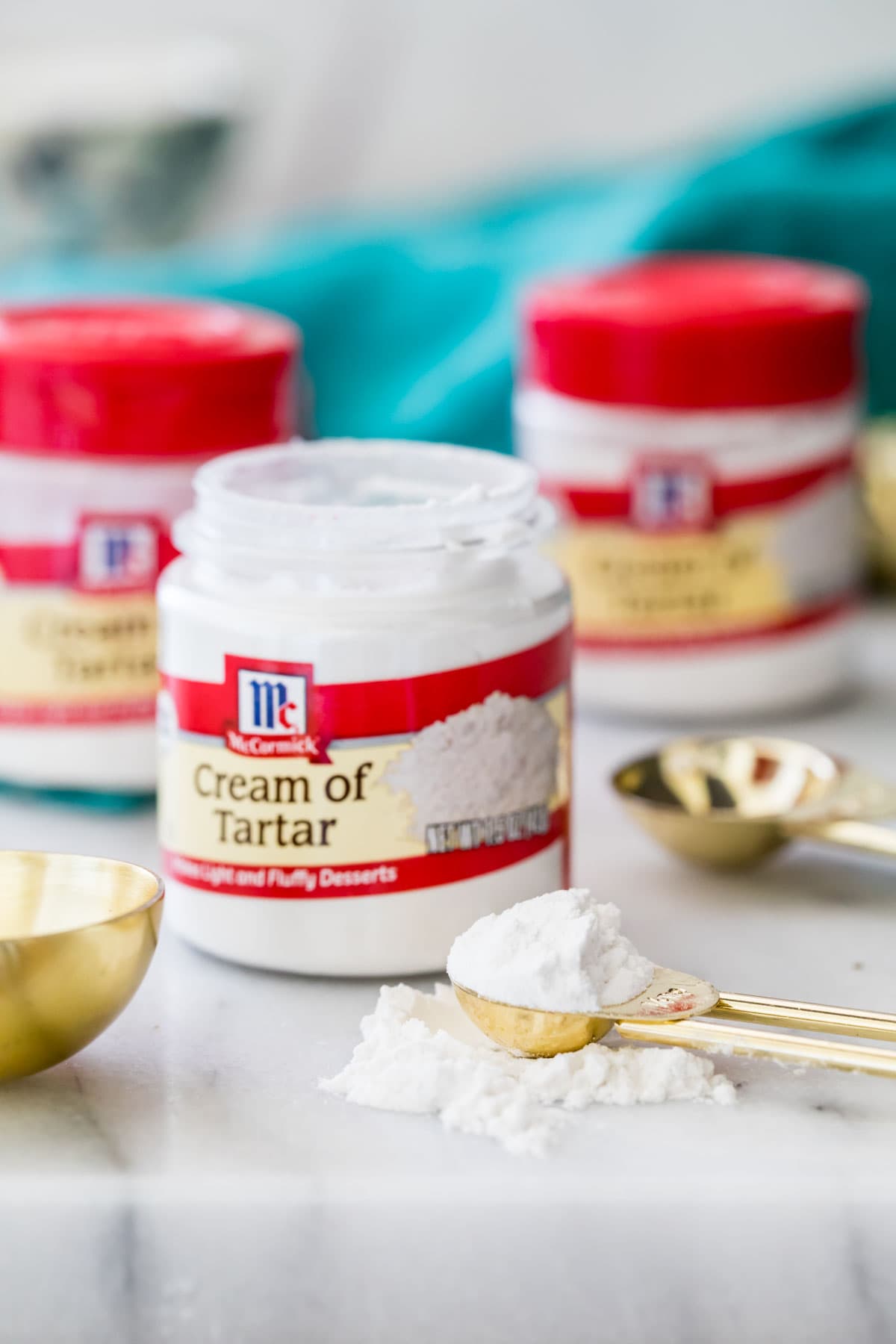
If it’s not already in your pantry, you’ve definitely seen it in the spice aisle of your grocery store: a mysterious, nondescript white powder that sounds like a dairy product, but is actually far from it. Of course, I’m talking about cream of tartar, the subject of today’s post and the ingredient that many bakers struggle to wrap their heads around.
Cream of tartar is surprisingly not very creamy at all–it’s actually an acid! Powdered tartaric acid, to be specific. Interestingly enough, it’s a byproduct of winemaking that somehow became a pantry staple. And thank goodness it did, because it has so many uses in baking!
What Is Cream of Tartar Used For?
Cream of tartar wears many hats in the kitchen. It adds tang to snickerdoodles, stabilizes egg whites for fluffy angel food cakes and light-as-air meringues, and prevents sugar from crystallizing for smooth syrups and chewy cookies.
When paired with baking soda, cream of tartar gives baked goods rise. In fact, this exact combination is what makes up baking powder! But you already knew that if you read my post on baking powder vs. baking soda. 🙃
Cream of tartar is incredibly versatile and is an absolute must-have for all bakers, no matter their skillset. Many of you have commented to tell me that you don’t keep any on hand, and I highly suggest you start. It has an incredibly long shelf life (some say it lasts forever!) as long as you keep it in an airtight container away from moisture and pests. If you happen to find some in the back of your cabinet, just make sure it’s still white, powdery, and has little to no smell, and you should be good to go!
SAM’S TIP: Some of you have asked if you can add cream of tartar to whipped cream to stabilize it. While you could, it does impart a slightly tangy flavor that doesn’t suit every recipe. This is why I use gelatin in my stabilized whipped cream; it blends in with the cream flawlessly and is completely undetectable if done properly!

Cream of Tartar Substitutes
We’ve all been there…in the middle of making a recipe that you thought you had all the ingredients for, when you realize you’re missing just one. If that “just one” happens to be cream of tartar, you may be in luck! While I believe it’s always best to use the real thing, you could try these substitutes that others have used successfully. Note: I haven’t tried all of these myself, so I can’t guarantee their results. If you try one, I’d really appreciate it if you let me know how it worked for you in the comments!
- White vinegar. This one is an easy even substitution! For every one teaspoon of cream of tartar, substitute one teaspoon of white vinegar. Note that vinegar can add unwanted flavor to your final product, so keep that in mind when substituting.
- Lemon juice. This is starting to sound familiar, isn’t it? Both white vinegar and lemon juice can be used to make my buttermilk substitute, and they can serve as cream of tartar substitutes too! You’ll want to double the measurement before substituting lemon juice, so for every one teaspoon of cream of tartar, you’ll want to add two teaspoons of lemon juice.
- Baking powder. As we’ve already determined, baking powder is made from cream of tartar and baking soda. So, if you have baking powder, you technically have cream of tartar too! You can substitute 1.5 teaspoons of baking powder for every 1 teaspoon of cream of tartar. Note: this only works in recipes that already include baking soda as an ingredient.
- Buttermilk. Buttermilk is also acidic, so it can work similarly; however, this substitution will only work in recipes that use a liquid, like milk, oil, or water. For one teaspoon of cream of tartar you’ll need to substitute 2 cups of the liquid with buttermilk. So if you only need half a teaspoon, you’d replace 1 cup of the liquid, ¼ teaspoon would be ½ cup of the liquid, and so on. As you can see, this substitution won’t work for every recipe.
SAM’S TIP: In some cases, your recipe may still work without cream of tartar. If you’re using it to stabilize egg whites, your egg whites can still turn out, but they may not be as stable. Recipes that use cream of tartar to prevent crystallization can still be made without it; you will just need to reheat the finished product if crystallization occurs.
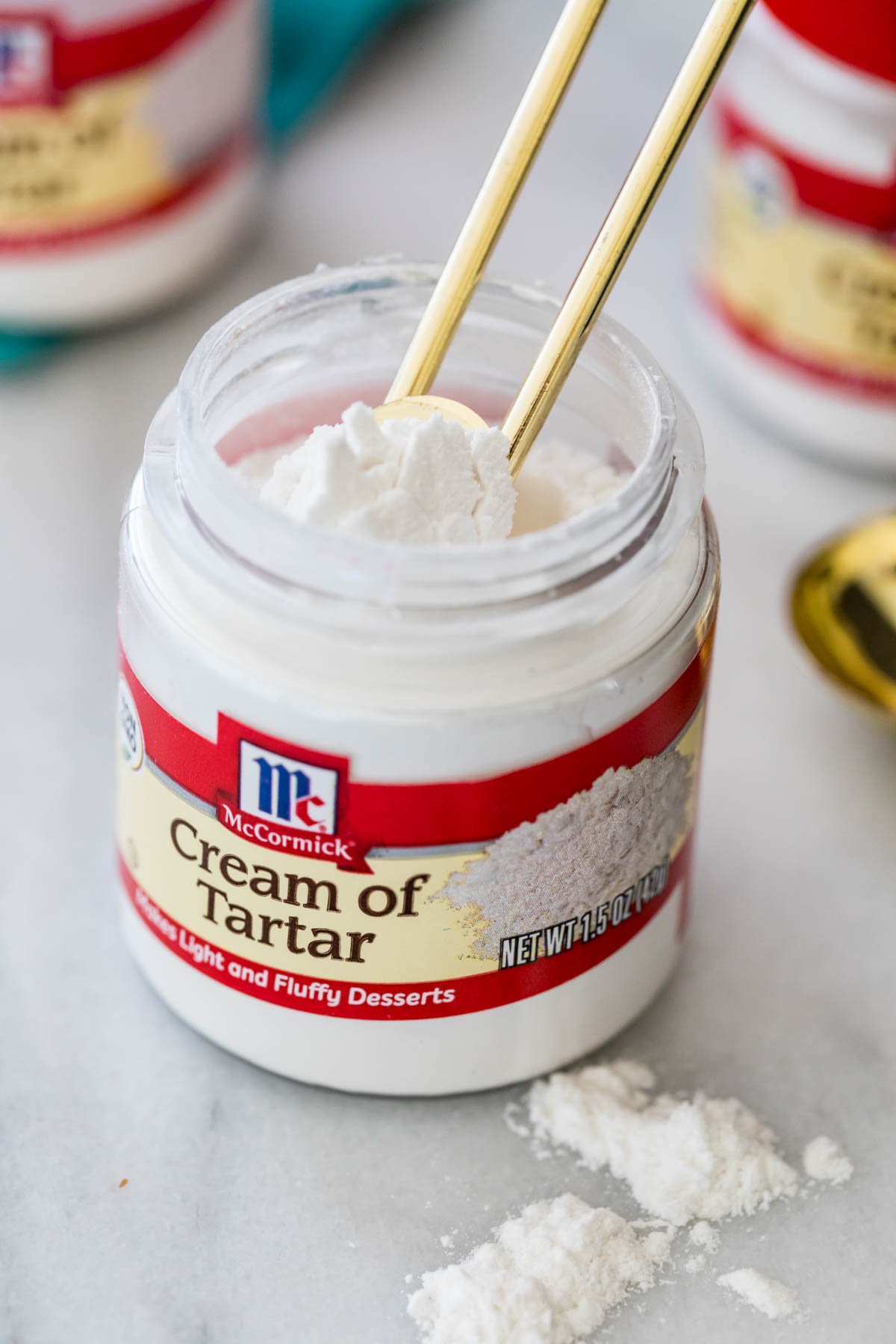
Frequently Asked Questions
No. While they look similar and are often used together, they have very different uses on their own. You can read more about baking soda in my post describing the differences between baking powder vs. baking soda.
No. Cornstarch is a starch used for thickening, while cream of tartar is an acid used for leavening, stabilizing, and preventing crystallization. They play totally different roles in baking and are not considered substitutes for one another.
In moderation, it will give your baked goods a pleasant tangy flavor. Adding too much will impart a bitter or sour taste, so be careful!
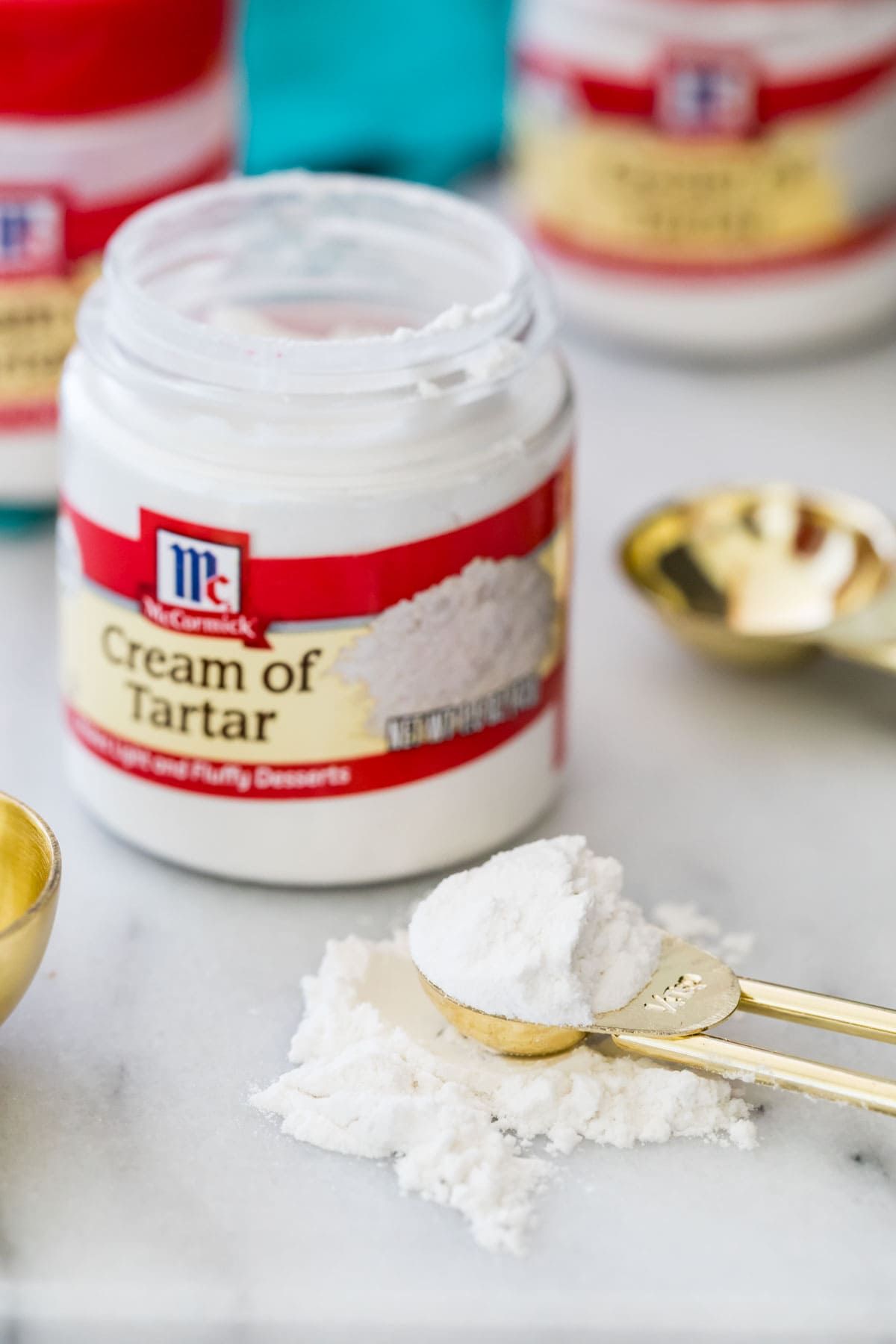
Recipes
Now that we’ve cracked the code on this ingredient, let’s put it to use! Here are some of my favorite recipes that rely on the powers of cream of tartar:
- Chocolate Snickerdoodles
- Cream Cheese Chocolate Chip Cookies
- Chocolate Meringues
- Lemon Cookies
- Pavlova
- Pumpkin Snickerdoodles
- Snickerdoodle Blondies
- Snickerdoodle Scones
- Sprinkle Cookies
And many, many more…have I convinced you to keep it in your pantry yet?!
Let’s bake together! Follow me on Instagram, and you can also find me on YouTube and Facebook.

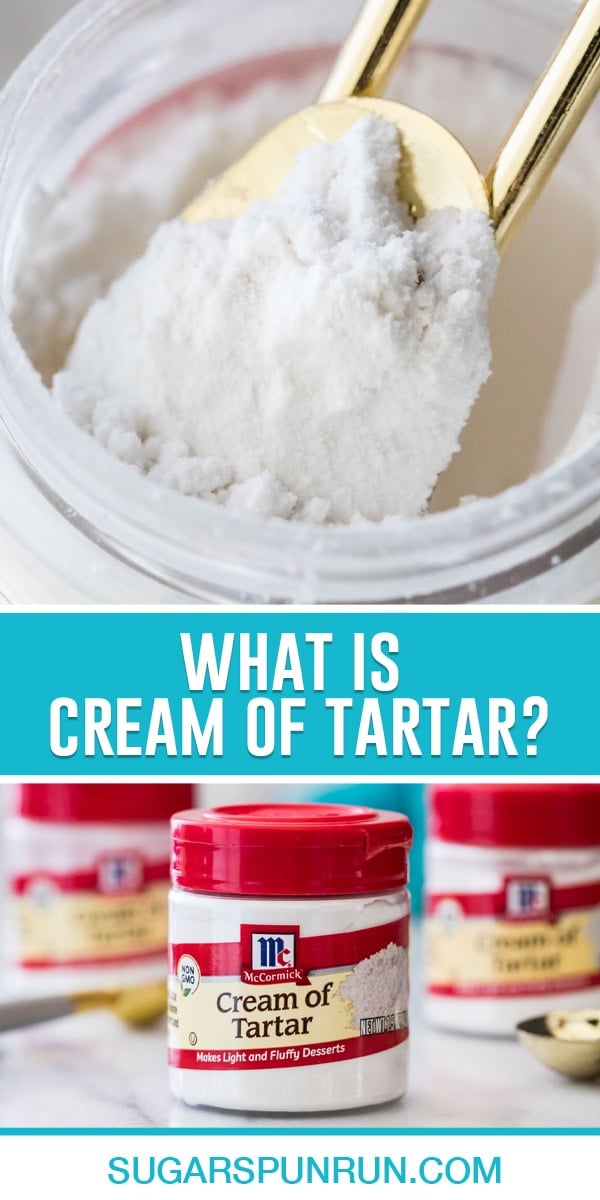
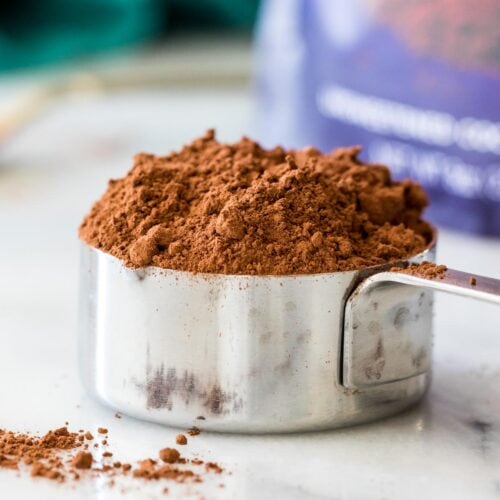
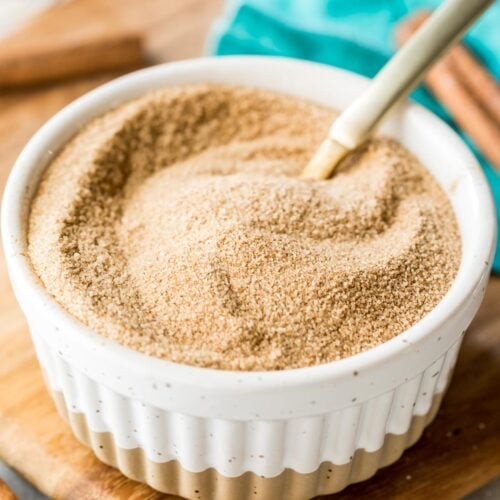
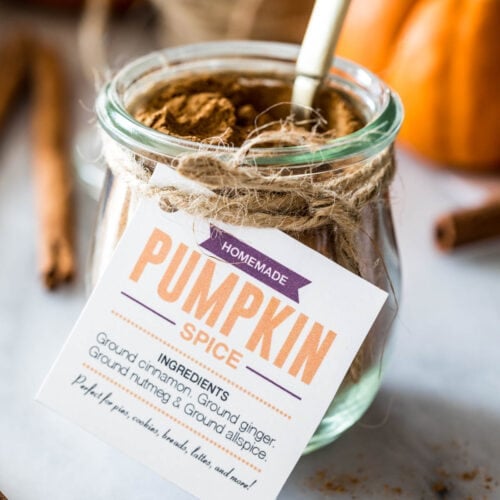
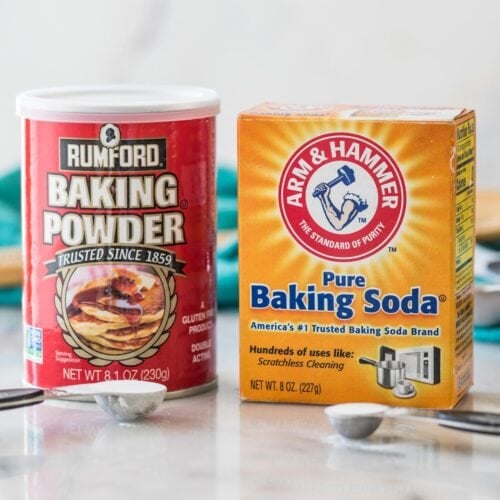
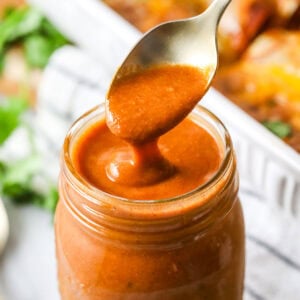

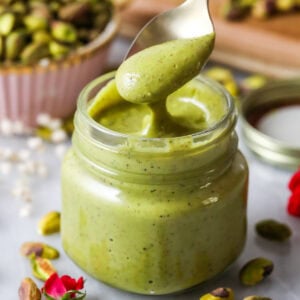
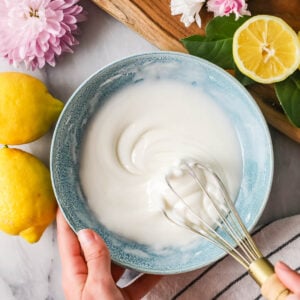
Bruce
If you use cream of tartar to avoid crystallization, any acid (vinegar, lemon juice) can be used instead, or some corn syrup (because it is invert sugar).
Cream of tartar is used for stabilizing egg whites because of how it affects the proteins. It won’t do the same for whipping cream, so it’s not a good idea to use cream of tartar with whipping cream.
Sam
Thanks Bruce! 🙂
alisha
it was quite interesting!
Emily @ Sugar Spun Run
We’re happy to hear it, Alisha 😀
Jane
Hey Interesting read on cream of tartar! Thanks for the informative post!
Ila
I just read your baking soda baking powder post answered my question. The science of baking is interesting
Sam
It really is interesting and fascinating! 🙂
Ila
Interesting…. Sooo???? If you don’t have baking powder can you add extra baking soda and cream of tarter as a substitute?
Gemma
I have not used Cream of Tartar for ages as we had been told that it was not good for your health an that it caused Alzheimer’s.
I would like your answer on that.
Sam
Hi Gemma! I have never seen any literature on this or research to support it nor was I able to find any doing a quick search. I think there are many other processed foods I would be much more concerned about and personally recommend moderation for good health in general.
Bea
TIP: I stabilize whipping cream with meringue powder or powdered milk. The meringue powder is AWESOME! It will keep your whipped cream stabilized for 2 weeks on a cake .
Now for your post, I use a pinch of citric acid instead of cream of tartar if for some reason I can’t find mine..but put a pinch of citric acid in alot of my baked goods. They come out beautiful & light.
Naomi
I read once that baking powder can have aluminum in it. I didn’t want that in my food, so I’ve been making my own baking powder with baking soda and cream of tarter for a long time. This article was interesting since I had no idea the chemistry behind it. Cool! 🙂
Sam
That is great you make your own! I use Rumford brand baking powder because I also want to avoid aluminum. I am so glad you enjoyed the post, Naomi 🙂
Vanessa Grijaldo
How much can we add to
A chocolate chip cookie recipe? What will it do to it? Can both cornstarch n cream of Tartar be use together if so how much can I use?
Sam
Hi Vanessa! I would typically recommend following the recipe as written, is there a reason you want to add the cream of tartar? A particular result you are trying to achieve? You can definitely play around and experiment but generally it’s best to follow the recipe as written.